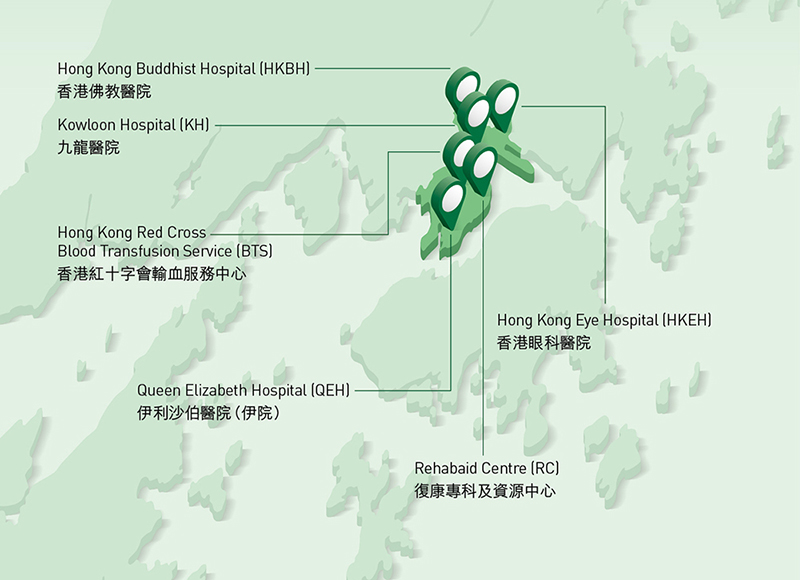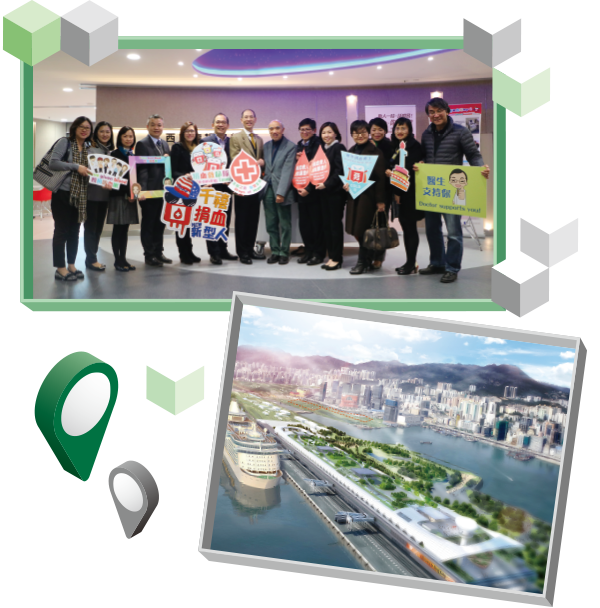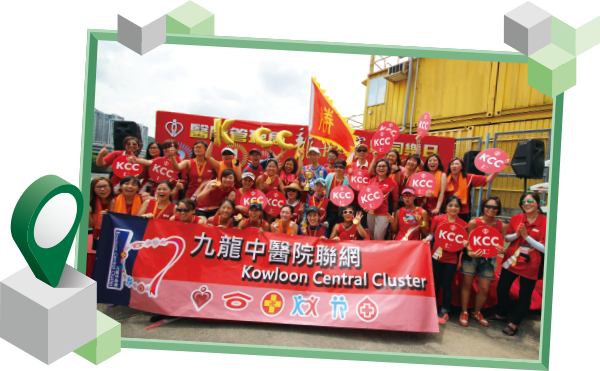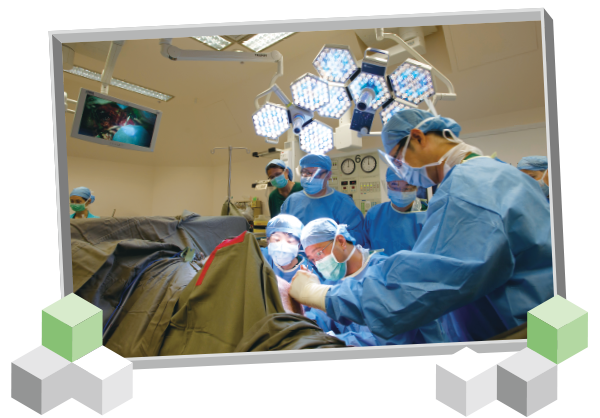Kowloon Central Cluster (KCC)

| Number of general outpatient clinics | 6 |
| Throughput | |
| Number of beds | 3,572 |
| Patient discharges* | 213,591 |
| A&E attendances | 195,584 |
| Specialist outpatient attendances (clinical) | 1,021,610 |
| General outpatient attendances | 570,417 |
| Full-time equivalent staff | 9,747 |
* Total inpatient, day patient discharges and deaths
KCC faced the challenge of maintaining quality service against increasing service volume in a densely populated Kowloon region. To maintain a stable workforce, KCC recruited additional nursing, allied health staff and patient care assistants in pressure areas. 100 nursing students were recruited to QEH nursing school to develop nursing manpower.
The surge in demand during winter months exerted considerable pressure on medical services. QEH A&E Department provided additional support sessions to handle the Triage IV (semi-urgent) & V (non-urgent) cases to alleviate congestion in the department. Additional general outpatient clinic quota was arranged in KCC to cater for the increasing demand in primary care services.
In the year, QEH implemented a series of initiatives to meet the increasing service volume, including enhancement of renal replacement therapy for patients with end-stage renal disease. Intensive Care Unit has increased the capacity of Extracorporeal Membrance Oxygenation (ECMO) services to support critically ill patients. Additional endoscopic procedures and operating theatre sessions for day surgery were introduced to address long waiting time. Use of minimally invasive surgery was extended to at least 80% of the hysterectomy surgeries for suitable gynaecological patients. Multi-disciplinary care for patients with HIV and treatment of highly active antiretroviral therapy was offered to eligible patients. An additional organ transplant coordinator was recruited to enhance the organ transplant services in KCC. On mental health service, a peer support worker who recovered from mental illness was recruited to support patients with severe mental illness in the community.
KCC continued to ensure service quality and safety. Enhancement of sterilisation services to satellite operating theatres in QEH was completed in 2015. HKEH implemented the surgical instrument tracking system and phased out the reuse of single use devices according to clinical prioritisation. To keep abreast of technological advancement, matrix-assisted laser desorption / ionisation time-of-flight (MALDI-TOF) mass spectrometry was introduced in QEH laboratory to speed up microbiological identification for timely diagnosis and treatment. Additional molecular tests were also introduced to patients requiring targeted therapies. A designated team was set up at HKEH to prepare the hospital for accreditation.

With the opening of the new West Kowloon Donor Centre in January 2016, blood donation services was further stepped up, thereby improving blood supply in town. BTS also enhanced its territory-wide blood transfusion service by increasing the production and supply of leucodepleted red cells and platelet concentrates. To cater for service development in KCC, commissioning teams were set up to handle capital projects including refurbishment of HKBH, expansion of BTS Headquarters and the re-provisioning of Yaumatei Specialist Outpatient Clinic at QEH.
KCC has kicked off the preparation works for a new acute general hospital in Kai Tak Development Area. Re-delineation of cluster boundary will be implemented in phases to re-align service provision in KCC, as recommended by the Steering Committee on Review of HA.


